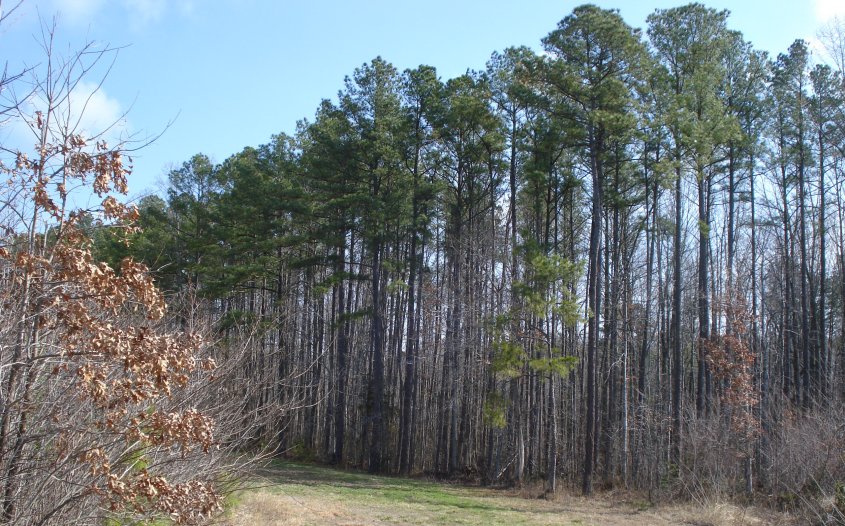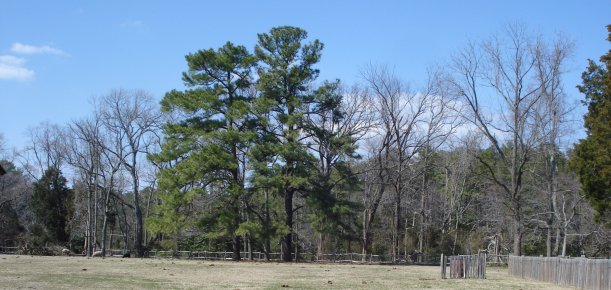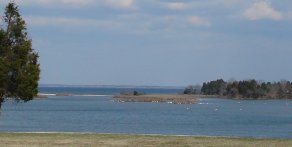Trees in established urban areas often are be bigger than trees in rural areas. This is counterintuitive until you think about it. Although urban trees suffer more stress from human activities, they are also protected and fertilized as individual specimens and are usually spaced farther apart, so they are not in close competition. Beyond that, trees are harvested in rural areas when they reach or pass maturity, or the bugs get them and they just fall down. In urban areas, they are often patched, pampered and propped up. It is unnatural. We do it for our own artistic tastes. It doesn’t make much ecological sense, but we humans develop attachments.

I recently visited a stand of forty-five year old loblolly. This stand is past prime. Loblollies are sprinters. They grow fast and although a few can live as long as 200 years, most don’t. (The oldest known loblolly pine is 245 years old, but none other is more than 200). They grow a lot slower after they reach the age of around thirty-five and don’t grow much at all after they are fifty. If you look at the picture above, you will see that the trees are planted too thickly. This and the stagnation of age make them much more vulnerable to disease and attacks by insects, such as the southern pine beetle. Most succumb to disease or accident long before they reach the century mark. Their lifespan is actually very much like three score and ten, mentioned as the lifespan of a man. Some of the individual trees are very impressive, and it is good to have a few of them, but the forest itself is not as healthy as it could be when it is dominated by over-aged trees. In fact, an over aged tree stand is much like a person with a disease such as TB. Their poor health may adversely impact the health of those around them.
Below – my guess is that these trees are around 80 years old. They remain healthy because they are isolated and w/o competition and are about as big as loblolly get. They really are not part of a forest. They are up against a pasture, which is well fertilized by the grazing animals. They look good, but they are growing almost not at all anymore. Notice that they are not much bigger than the forty-five year old trees pictured above

I feel bad whenever I see a large tree cut down, but I also don’t like to walk through the geriatric ward for trees in terminal decline. Trees live a long time, but they don’t live forever and as with any other living thing, few will reach anything near their maximum lifespan. A tree in decline is not a beautiful thing and it is not good for the health of neighboring trees. If we manage to save the old tree this year, it is not like it will live on forever. The best choice is to replace the old tree with a couple of new ones and admire the big and healthy old tree somewhere else. Think total ecosystem, not individual specimen.
I visited George Washington’s birthplace (below) on the Northern Neck the other day and I wondered if little George played under some of the big trees. I doubt it. Those trees would have to be around 300 years old and few trees, even most of the long-lived oaks, don’t make it that long. It is easy to be misled. An oak tree grows very slowly after it reaches 100 years old, so a 300 year old oak tree is not very much bigger than a 100 year old tree.

It is fun to think of the trees as a living link with our past, but unfortunately some of our past is too long ago. There are still some trees at Monticello that remember Thomas Jefferson & some at Mount Vernon planted when George Washington owned it, but they are up against their maximum lifespan. We are now reaching the edge of the Civil War trees. I can remember a time when there were living trees at Gettysburg that still bore the marks of the battle. Each year they are fewer and many of us alive today will outlive the last of them. (The longest-lived trees in Virginia, BTW, are bald cypress found in the southeast corner of the state.)
Below is Pope Creek divided by a sandbar from the Potomac River. The Potomac is miles wide at this point; from this place it looks like a really big lake or even the ocean.

The point is that you have to think ahead. Assume that the big old tree will die and plant similar little trees somewhere else. Nothing lasts forever, but working with nature we live with sustainable change.
